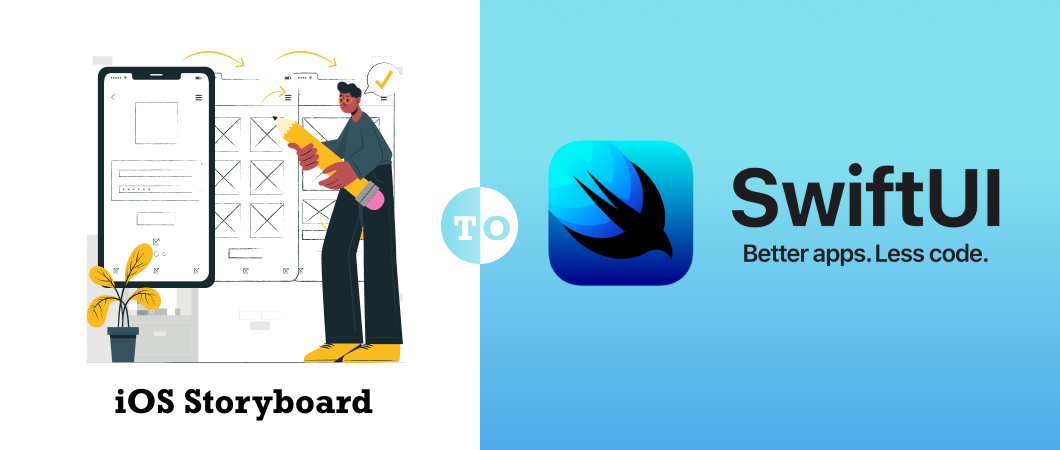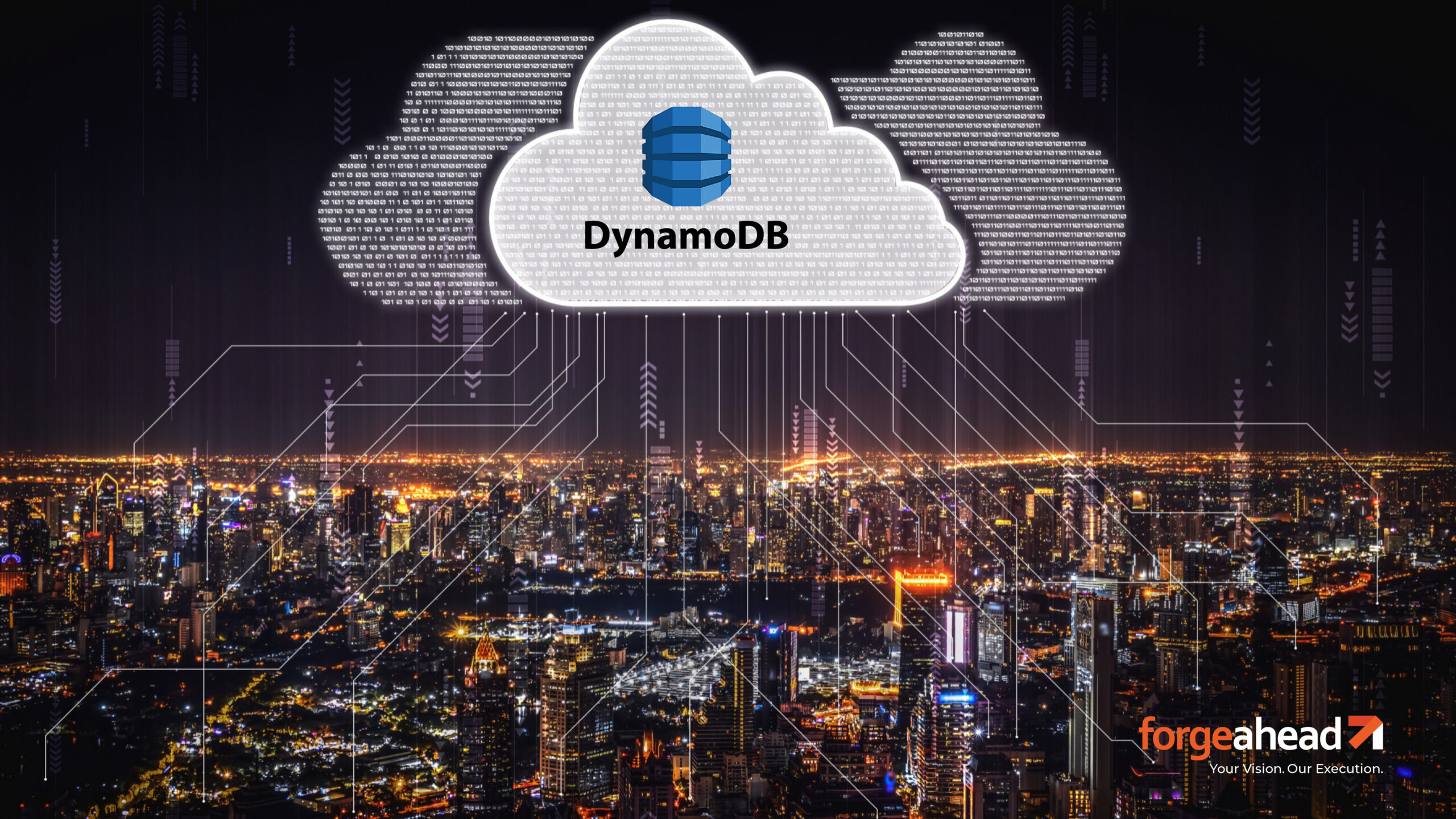In iOS app development, storyboards have so far been the default way of designing iOS apps. However, there has been a shift by Apple to using SwiftUI as the primary way of building user interfaces for apps.
This migration is being pushed hard by Apple to take advantage of customers’ demands in the modern day. SwiftUI primarily brings forth the latest trends in interactive, responsive, and dynamic user interface design, which can adapt to various kinds of devices, screen sizes, and orientations at the endpoint of any application.
With SwiftUI, there has been a major change in approach to designing UI from actually implementing UI in code to using declarative syntax to describe the UI required in terms of properties and behavior. SwiftUI comes with a cauldron full of world-class components and layouts, which can be reused easily. This simplifies the development process, increasing efficiency and speeding up deployments. Overall productivity accelerates while using SwiftUI, which is crucial in this age of digital transformation.
In this article, we will discuss the reasons why companies should consider migrating their apps from Storyboard to SwiftUI and how we at Forgeahead can help companies make this transition with ease.
So Much Storyboard but a Fading Future
Though SwiftUI is an attractive option, most apps currently use storyboards as the driver of their UI interface. Businesses and app authors need to migrate their apps to use SwiftUI in the shortest period of time to keep up with technology trends. It is clear that Apple is laying all its bets on SwiftUI being the future directive for UI; hence it will be a natural progression for all apps to be developed using SwiftUI. Existing and legacy apps will soon have no option but to migrate the UI components of their apps to SwiftUI.
Why Migrate from Storyboard to SwiftUI?
The performance, ease of use, look and feel, and cross-platform compatibility of SwiftUI completely justify the migration of storyboards to SwiftUI, making the storyboards obsolete technology in the very near future.
There are several reasons why companies should consider migrating their existing apps from Storyboard to SwiftUI. These include:
Improved App Performance
SwiftUI is optimized for performance and can significantly improve app performance compared to Storyboards. SwiftUI uses a declarative syntax that minimizes code and allows for faster rendering, making apps more responsive and reducing the load on the device’s processor.
Easier Maintenance
SwiftUI uses a more modern and efficient approach to UI development, making it easier to maintain and update apps. The declarative syntax of SwiftUI allows developers to write cleaner, more organized code, reducing the time and effort required for maintenance.
Better User Experience
SwiftUI offers a range of powerful tools that can be used to create engaging and interactive user interfaces. This can improve user experience, increase user engagement, and improve app ratings.
Future Proofing
As Apple continues to shift its focus towards SwiftUI, it is likely that Storyboards will eventually be phased out. By migrating to SwiftUI now, companies can future-proof their apps and ensure that they remain relevant and up-to-date in the years to come.
The Migration Is Not a Simple Task
Migration of an app from using storyboards to SwiftUI is not as simple as it seems. The approach to UI creation is completely different. SwiftUI is a declarative UI framework that uses a completely different syntax to describe the UI as compared to storyboarding of an app. It takes time to get used to. The design patterns of storyboards and SwiftUI are different, one being imperative in nature while the other is declarative.
The toolsets and workflows are different, and developers need to be fluent in both to be able to implement any successful migration. Debugging SwiftUI is very different from debugging apps with storyboards. There are new debugging techniques that have been introduced for SwiftUI implementation.
Besides, apps using storyboards have been written with a significant amount of legacy code, and this code needs to be refactored to work with SwiftUI components, which can be a complex process.
At Forgeahead, we have been at the forefront of the mobile app development industry for over a decade. We have extensive experience in developing apps for iOS, Android, and web platforms, using a range of technologies and tools. With the growing demand for storyboard to SwiftUI migration services, we have recognized this as a significant business opportunity and have developed the expertise and capability to provide migration services to our clients.
How Forgeahead Can Help with the Migration Process?
At Forgeahead, we have developed a comprehensive process for Storyboard to SwiftUI migration. Our process includes the following steps:
Project Assessment
We start by conducting a thorough assessment of the client’s app, reviewing the codebase, and identifying the screens that need to be migrated to SwiftUI. We also review any third-party libraries or frameworks used in the app and ensure that they are compatible with SwiftUI.
Planning and Design
We work closely with the client to plan the migration process, creating a detailed project plan that outlines the timeline and milestones. We also work with the client to design the new SwiftUI screens, ensuring that they meet the client’s requirements and provide an improved user experience.
Migration
Our team of experienced developers then begins the migration process, converting the Storyboard screens to SwiftUI. We use a range of tools and techniques for ensuring a smooth and efficient migration process and minimizing any disruption to the app’s functionality.
Integration and Testing
Once the migration is complete, we integrate the new SwiftUI screens into the existing app codebase and conduct thorough testing to ensure that the app functions as expected. We also conduct compatibility testing to ensure that the app works seamlessly across all devices and platforms.
Deployment and Support
Finally, we help the client deploy the updated app to the App Store. We further provide ongoing support to ensure that the app remains up-to-date and functional.
As Apple continues to shift its focus towards SwiftUI, the demand for Storyboard to SwiftUI migration services is expected to increase. At Forgeahead, we have the expertise and capability to drive this migration. Talk to our experts to learn more.



